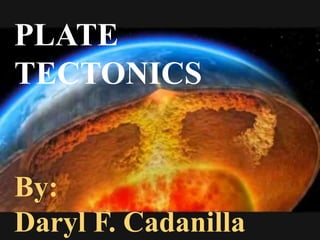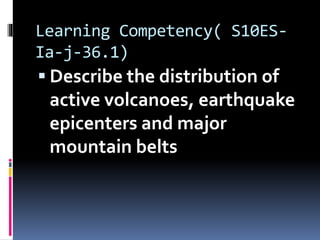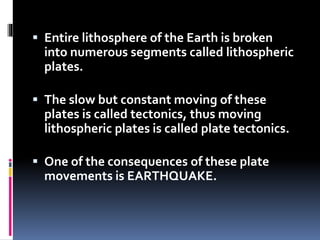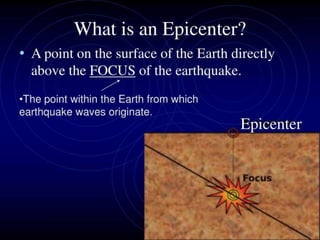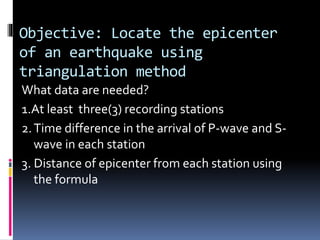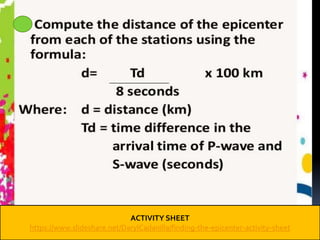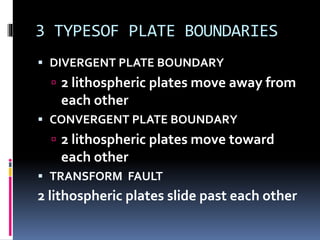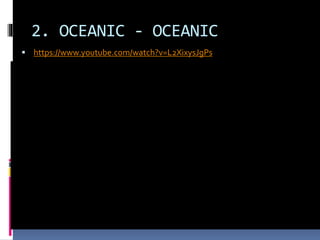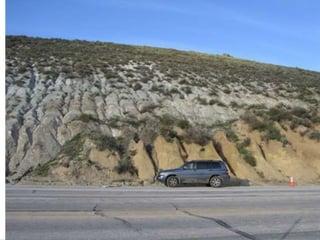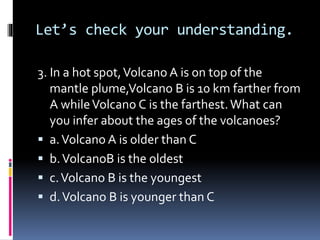The document discusses plate tectonics, explaining the theory that the Earth's lithosphere is divided into tectonic plates that move independently. It covers the types of plate boundaries—divergent, convergent, and transform faults—and their geological effects, including earthquakes, volcanic activity, and the formation of mountain ranges. Additionally, it highlights the importance of locating earthquake epicenters for assessing damage and planning disaster response while introducing the concept of hot spots where volcanoes can form away from plate boundaries.
